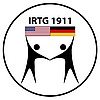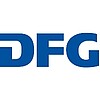Next Graduation within the IRTG
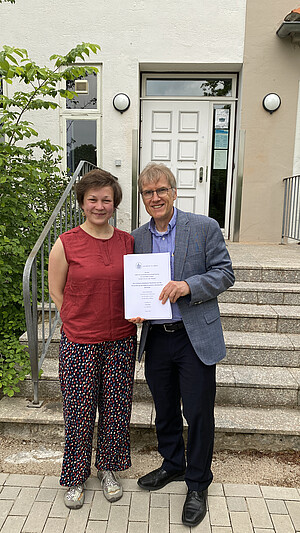
Julia Kilian, IRTG fellow from April 2015 - March 2016, defended her dissertation on "The influence of circadian rhythms on the development of experimental allergic asthma" successfully on June 07th, 2022.
Congratulations!!!
Jörg Köhl ranked among the top 50 Immunology researchers in Germany
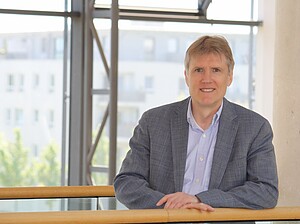
The academic research portal research.com presented its 2022 edition of top-ranked scientific-researchers from around the world in the field of Immunology. More than 6,300 scientist profiles have been examined with several indicators and metrics reviewed in order to consider each scientist’s inclusion in the ranking. In order to be considered for the ranking, the h-index threshold was set to 40 if most of the publications were in the field of immunology. The h-index was invented by J.E. Hirsch and is often used as a measure of a researcher's scientific quality and impact. Further, profiles and data from the scientific search engines Google Scholar and Microsoft Academic Graph were evaluated.
The aim of this ranking is to increase the visibility and transparency of the influential and innovative contributions of researchers around the world.
Jörg Köhl, Professor and Director of the Institute for Systemic Inflammation Research at the University of Lübeck was ranked #45 in Germany (out of 240 Professors from 35 German universities) with an h-factor of 74, >18,000 citations and 190 publications. Further, he ranked #887 in the world. The University of Lübeck was ranked #11 among all German universities in the field of Immunology.
Top Immunology Scientists – German Ranking
https://research.com/scientists-rankings/immunology/de
https://research.com/u/jorg-kohl
Top Immunology Universities – German Ranking
https://research.com/university-rankings/immunology/de
Inflammatory blockade prevents injury to the developing pulmonary gas exchange surface in preterm primates
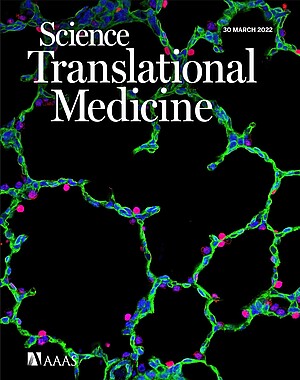
Perinatal inflammatory stress is associated with early life morbidity and lifelong consequences for pulmonary health. Chorioamnionitis, an inflammatory condition affecting the placenta and fluid surrounding the developing fetus, affects 25 to 40% of preterm births. Severe chorioamnionitis with preterm birth is associated with significantly increased risk of pulmonary disease and secondary infections in childhood, suggesting that fetal inflammation may markedly alter the development of the lung. Here, we used intra-amniotic lipopolysaccharide (LPS) challenge to induce experimental chorioamnionitis in a prenatal rhesus macaque (Macaca mulatta) model that mirrors structural and temporal aspects of human lung development. Inflammatory injury directly disrupted the developing gas exchange surface of the primate lung, with extensive damage to alveolar structure, particularly the close association and coordinated differentiation of alveolar type 1 pneumocytes and specialized alveolar capillary endothelium. Single-cell RNA sequencing analysis defined a multicellular alveolar signaling niche driving alveologenesis that was extensively disrupted by perinatal inflammation, leading to a loss of gas exchange surface and alveolar simplification, with notable resemblance to chronic lung disease in newborns. Blockade of the inflammatory cytokines interleukin-1β and tumor necrosis factor–α ameliorated LPS-induced inflammatory lung injury by blunting stromal responses to inflammation and modulating innate immune activation in myeloid cells, restoring structural integrity and key signaling networks in the developing alveolus. These data provide new insight into the pathophysiology of developmental lung injury and suggest that modulating inflammation is a promising therapeutic approach to prevent fetal consequences of chorioamnionitis. The publication is available here.
New Review summarizing IL-27-mediated mechanisms affecting protection and immunopathology in TB and possible therapeutic applications
In tuberculosis (TB), protective inflammatory immune responses and the pathological sequelae of chronic inflammation significantly depend on a timely balance of cytokine expression. In contrast to other anti-inflammatory cytokines, interleukin (IL)-27 has fundamental effects in experimental Mycobacterium tuberculosis (Mtb) infection: the absence of IL-27-mediated signalling promotes a better control of mycobacterial growth on the one hand side but also leads to a chronic hyperinflammation and immunopathology later during infection. Hence, in the context of novel host-directed therapeutic approaches and vaccination strategies for the management of TB, the timely restricted blockade of IL-27 signalling may represent an advanced treatment option. In contrast, administration of IL-27 itself may allow to treat the immunopathological consequences of chronic TB. In both cases, a better knowledge of the cell typespecific and kinetic effects of IL-27 after Mtb infection is essential. This review summarizes IL-27-mediated mechanisms affecting protection and immunopathology in TB and discusses possible therapeutic applications. The publication is available here.
The complement system – stepping out of the shadows and into the spotlight
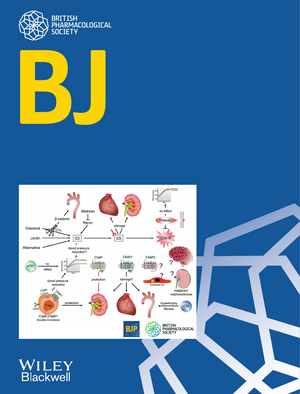
The complement system has evolved during the past 1.2 billion years, making it one of the oldest parts of the immune system. Since its discovery around 100 years ago, the system has been mainly associated with its role as a first line defense system and guardian of the vascular space. However, several findings published during the past few years suggest that this might be only a small facet of the multiple functions of the system and that we have explored at best the tip of the iceberg.
Recent reports rediscovered complement production within cells, now with a fresh look on activation of complement factors within cells demonstrating novel roles for complement in cell homeostasis, survival and differentiation. The well know mechanisms of canonical pathway activation in response to C1q, MBL or Ficolin sensing, followed by C3 and C5 cleavage through C3 and C5 convertases have been complemented by non-canonical mechanisms, leading to cleavage and activation of complement factors in the circulation and within immune cells. Moreover, it has been shown that the complement system exerts multiple and bidirectional interactions with other sensor and effector systems of innate immunity thereby regulating and controlling responses of both, innate and adaptive immunity. With this plethora of novel functions, playing critical roles in acute and chronic inflammatory diseases, several molecules of the system became attractive therapeutic targets, eventually getting into the spotlight of the pharmaceutical industry.
The July themed issue of the British Journal of Pharmacology highlights in 10 articles recent discoveries that add to the extended view of the complement system with a fresh look on the functions of intracellular complement, thrombosis, trauma, hypertonia, kidney disease and COVID-19.
New publication describes how the C5a/C5a receptor 1 axis controls tissue neovascularization
Platelets contribute to the regulation of tissue neovascularization, although the specific factors underlying this function are unknown. Here, we identified the complement anaphylatoxin C5a-mediated activation of C5a receptor 1 (C5aR1) on platelets as a negative regulatory mechanism of vessel formation. We showed that platelets expressing C5aR1 exert an inhibitory effect on endothelial cell functions such as migration and 2D and 3D tube formation. Growth factor- and hypoxia-driven vascularization was markedly increased in C5ar1−/− mice. Platelet-specific deletion of C5aR1 resulted in a proangiogenic phenotype with increased collateralization, capillarization and improved pericyte coverage. Mechanistically, we found that C5a induced preferential release of CXC chemokine ligand 4 (CXCL4, PF4) from platelets as an important antiangiogenic paracrine effector molecule. Interfering with the C5aR1-CXCL4 axis reversed the antiangiogenic effect of platelets both in vitro and in vivo. In conclusion, we identified a mechanism for the control of tissue neovascularization through C5a/C5aR1 axis activation in platelets and subsequent induction of the antiangiogenic factor CXCL4. The publication is available here.
Immunology Day on April 29th: Should I or shouldn't I? - Information about Corona and the vaccination
On April 29th, the Immunology Day is celebrated around the world. The motto in 2021 is COVID-19. The German Society for Immunology has compiled a lot of interesting material regarding the immune system, SARS-CoV-2/Covid-19, how vaccinations work and transplants on https://das-immunsystem.de/tag-der-immunologie-2021/
On the topic of Covid-19, the following posters have been created:
- SARS-CoV-2 and Covid-19: What is it?
- Hygiene and behavioral measures to protect against SARS-CoV-2 infections.
- SARS-CoV-2 testing systems
- Vaccination against SARS-CoV-2: How does it actually work?
- Side effects and risks of vaccines
- What does immunity mean?
- Drugs in Covid-19 therapy
New article dealing with the role of C3/C3a in tissue priming of fibroblasts in arthritis

Arthritis typically involves recurrence and progressive worsening at specific predilection sites, but the checkpoints between remission and persistence remain unknown. Here,we defined themolecular and cellular mechanisms of this inflammation-mediated tissue priming. Re-exposure to inflammatory stimuli caused aggravated arthritis in rodent models. Tissue priming developed locally and independently of adaptive immunity. Repeatedly stimulated primed synovial fibroblasts (SFs) exhibited enhanced metabolic activity inducing functional changes with intensifiedmigration, invasiveness and osteoclastogenesis.Meanwhile, human SF frompatients with established arthritis displayed a similar primed phenotype. Transcriptomic and epigenomic analyses as well as genetic and pharmacological targeting demonstrated that inflammatory tissue priming relies on intracellular
complement C3- and C3a receptor-activation and downstream mammalian target of rapamycin- and hypoxia-inducible factor 1a-mediatedmetabolic SF invigoration that prevents activation-induced senescence, enhances NLRP3 inflammasome activity, and in consequence sensitizes tissue for inflammation. Our study suggests possibilities for therapeutic intervention abrogating tissue priming without immunosuppression. The Publication is available here.
New Review Article Discussing Complement-Targeted Immunotherapy to Fight COVID-19 Infection
Jörg Köhl (University of Lübeck) and Sonata Jodele (Cincinnati Children's Hospital Medical Center) submitted a review article, discussing the role and potential of complement in COVID-19 infection: The complement system is an ancient part of innate immunity sensing highly pathogenic coronaviruses by Mannan-binding lectin resulting in lectin pathway activation and subsequent generation of the anaphylatoxins (AT) C3a and C5a as important effector molecules. Complement deposition in endothelial cells and high blood C5a serum levels have been reported in COVID-19 patients with severe illness, suggesting vigorous complement activation leading to systemic thrombotic microangiopathy (TMA). Strikingly, SARS-CoV-2 infected African Americans suffer from high mortality. Complement regulator gene variants prevalent in African Americans have been associated with a higher risk for severe TMA and multi-organ injury. These findings allow us to apply our knowledge from other complement-mediated diseases to COVID-19 infection to better understand severe disease pathogenesis.
This review article ‘Tackling COVID-19 infection through complement-targeted immunotherapy’discusses the multiple aspects of complement activation, regulation, crosstalk with other parts of the immune system and the options to target complement in COVID-19 patients to halt disease progression and death. It is currently in the review process in frame of the Themed Issue‘Canonical and non-canonical functions of the complement system in health and disease’ in the British Journal of Pharmacology with Claudia Kemper (University of Lübeck/National Institutes of Health), Ulrich Wenzel (University Hospital Hamburg-Eppendorf) and Jörg Köhl as guest editors. A preprint is already available as a preprint via the online server Authorea.
An Attempt to Polarize Human Neutrophils Toward N1 and N2 Phenotypes in vitro
Research in the past decade revealed a large and hitherto not appreciated phenotypic heterogeneity of neutrophil granulocytes. Especially the tumor-associated N1 and N2 neutrophils that represent immunostimulatory and immunosuppressive subpopulations, respectively, have been subject of intensive research. As most knowledge regarding N1 and N2 neutrophils is derived from murine cancer models, we aimed to develop a model for the phenotypic polarization of human neutrophils in vitro. By providing an activating environment in form of a N1 polarization cocktail or mimicking the tumor environment in form of a N2 polarization cocktail, we were able to drive the polarization of primary human neutrophils in the cell culture toward N1-like and N2-like phenotypes, respectively. Furthermore, we applied our in vitro polarization model to investigate the hypothesis that intracellular pathogens polarize neutrophils toward an immunosuppressive phenotype with limited antimicrobial functions. Indeed, our findings indicate that N2-polarized neutrophils exert a markedly decreased capacity to kill the intracellular parasite Leishmania donovaniand, therefore, promote parasite persistence. Taken together our in vitro polarization model represents a step towards establishing an in vitro protocol for the in-depthanalysis of N1 and N2 neutrophil subsets. For further information please click here


